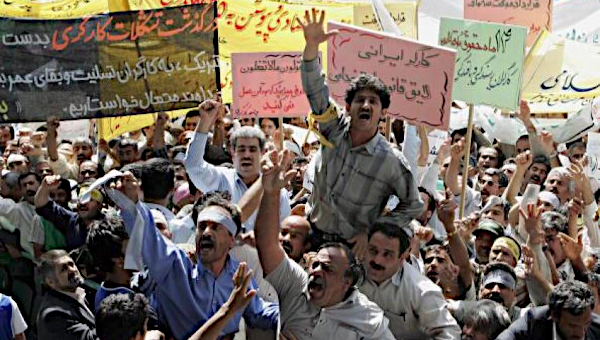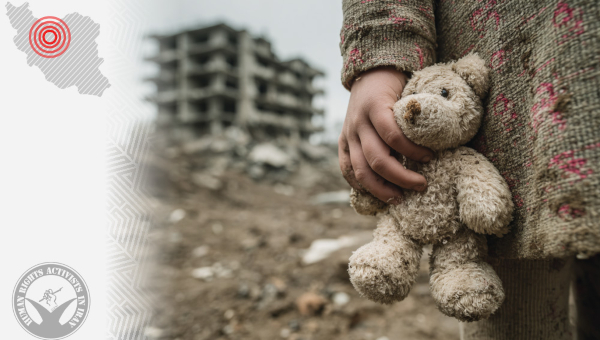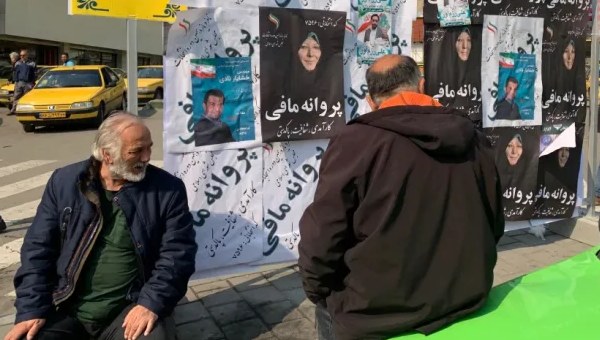Iran’s New President: Another Islamist and More of the Same
Following the mysterious helicopter crash on May 20th that killed Ibrahim Raisi, the president of Iran’s Islamic regime, a hasty presidential election was put together. Raisi, a hardline “Principlist” cleric, also known as the Ayatollah of Death because of his membership in the committee that decided on the execution of thousands of political prisoners in 1988, was part of the Supreme Leader Khamenei’s project to “homogenize” the political system by removing the remaining so-called Islamist “reformists,” a.k.a. the loyal opposition. Needless to say, the secular progressive opposition was never part of the power structure.
The project failed miserably. Internally, it faced even more resistance, culminating in the 2022 Women/Life/Freedom rebellion that openly challenged the regime and crushed its legitimacy. The confluence of major economic, social, cultural, and environmental crises was the direct result of the regime’s incompetence, rampant corruption, and obscurantism. Externally, the continued support of radical Islamist proxy organizations in the region, anti-American/anti-Israeli rhetoric, and halting of the JCPOA nuclear agreement, along with the expansion of the nuclear enrichment program, had further isolated Iran, with detrimental sanctions continuing.

Anger and Dissatisfaction
The anger and dissatisfaction of Iranians had shown itself in the March parliamentary elections with the lowest turnout for legislative elections since the 1979 Revolution. Fearful of a more widespread boycott of the presidential election, the Guardian Council – a rubber-stamp of the Supreme Leader for verifying the candidates – added a little-known soft-spoken physician MP, Masoud Pezeshkian, to the five hard-core and well-known verified Principlists. Still, the participation in the first round remained as low as 39 percent with about two percent spoiled ballots. The participation in the capital city, Tehran, was only 23 percent. Pezeshkian, who received higher votes, went through the runoff election with the creepiest Principlist, Saeed Jalili.
Jalili, a former secretary of the Supreme National Security Council, a former chief nuclear negotiator, and now a member of the Expediency Council, belongs to a group of Shi’a fundamentalists who believe in expediting the return of Shi’a messiah, Mahdi, and is a follower of a cleric, Mohammad Mehdi Mir-Bagheri, who is compared to the ISIS’ Al-Baghdadi. Scared of Jalili being elected, more people participated in the second round of the election (49.8 percent), and Pezeshkian received 16.3 million votes as opposed to Jalili’s 13.5 votes. Unlike previous instances, including the 2009 rigged presidential election that declared Ahmadinejad as the winner and led to the mass Green Movement, the election authorities did not change the result, and Pezeshkian was declared the winner. There are reports that even the office of the Supreme Leader did not want Jalili’s win, as his faction is not supportive of Khamenei’s son, Mojtaba, to succeed him.
Speculation abounded about why the regime included Pezeshkian among the verified candidates. Some heralded major changes in the Islamic regime’s politics. Some even called him the Gorbachev of Iran. However, Pezeshkian is no Gorbachev; he was brought into the scene to preserve and not dismantle the system. Moreover, in the Islamic regime in Iran, the “president” is, at best, a deputy to the Supreme Leader for running the day-to-day affairs of the government, excluding major areas such as foreign policy, defence/armed forces, security, and intelligence. These are areas directly controlled by the Leader’s office, which has also a huge fund, estimated to be close to a hundred billion dollars, accrued from the confiscated properties of the previous regime and other political and religious opponents, and operates in all sectors of the economy.
There is also the Islamic Revolutionary Guards Corps (IRGC) which strongly influences the government in all aspects because of their vast holdings, corporations, and those of the numerous religious foundations control over 40 percent of the country’s GDP and are exempt from taxation and supervision. Of these three governments, the presidency is ironically the weakest. Therefore, a new president cannot possibly initiate major changes.
Furthermore, Pezeshkian has to work with a parliament filled with hard-core Principlists of all sorts. He has also inherited an almost bankrupt economy with rampant inflation and high unemployment. Aside from these structural impediments, Pezeshkian, a personal physician of Khamenei, is a devout Islamist and has not claimed that he is seeking major changes. During the election campaign, he declared himself to be a “reformist principlist” (sic.) who is totally “engrossed in the supremacy of the jurist,” and promised that he would only operate within the “red lines” set by the Supreme Leader.
Interestingly, several analysts exposed him, noting that his acceptance speech in the so-called Parliament was taken verbatim from an earlier edict issued by Khamenei. He has also been an integral part of the establishment and an MP for 20 years. He was, for example, Minister of Health when Zahra Kazemi, the Iranian-Canadian photojournalist, was tortured, sexually assaulted, and murdered in the custody of the Islamic Guards. At the time, he brazenly denied any charges against the authorities. Nonetheless, despite all of his collusion, he is given credit, compared to the other candidates, for being moderate and not having any corruption on his record.
Cosmetic Results
It can be said that Pezeshkian’s election is partly cosmetic. He is a mild-mannered man in a suit with a real doctorate, (most of the top officials of the Islamic regime, including the last President are gratuitous doctors!) who succeeds a hanging judge mullah with an elementary education. However, the regime hopes that he will introduce some minor internal changes, and in particular, try to improve relations with the West in the hope of removing the debilitating sanctions.
But, contrary to his promise that the selection of members of his cabinet and other appointees would be based on expertise and merits, Pezeshkian’s list of ministers, put together in consultation with the “higher authorities,” reflects the usual gang, including some from the previous administration, a few second-rate so-called reformists, and most from the security, military, business, and religious establishments. The Principlist-filled Parliament would not have approved otherwise. On August 21st in the Parliament, just before MPs cast their vote, Pezeshkian openly declared that his list of ministers had been approved by “Agha” (the Supreme Leader), the IRGC, and the security authorities. Accordingly, all the ministers were ratified by the Parliament!
The Israeli assassination of Ismail Haniyeh, Head of the Hamas political bureau, on the day of Pezeshkian’s swearing-in in Tehran, was not only the most humiliating blow to the Islamic regime, but it also provided the best excuse for the hardliners in Iran to try to prevent any softening of the regime’s policies. This was exactly what the present ultra-right Israeli government, which thrives on the hostility of the Islamic regime and claims of it being an “existential threat,” was seeking.
Indeed, Netanyahu and his coalition achieved several goals at the same time. They killed the leader of Hamas, who was ready for peace negotiations; they prevented the possibility of any minor changes in the Islamic regime’s politics, and they extended the policy of continuing the Gaza war and remaining in power. It was also a setback for the Iranian people and civil society, as the regime will now more vigorously suppress any movement challenging its power and demanding change.
All indications point to the fact that the new presidency in Iran is nothing but more of the same, with some efforts toward reducing internal tensions, and in particular, removing sanctions. Concerned about the regional and international threats, including the potential of a full-scale war with Israel and the US, and also the possibility of Trump returning to power,leading to the imposition of more severe sanctions against Iran, Khamenei’s recent remarks about “tactical retreat,” and if needed, “interaction with the enemy,” point to the fact that he is sanctioning some change. Yet, the inherent contradictions of the regime and disputes among the ruling bloc remain unresolved; economic, political, and cultural crises continue; and growing dissatisfaction and anger among the people and the likelihood of further confrontations with the regime remain strong. •





